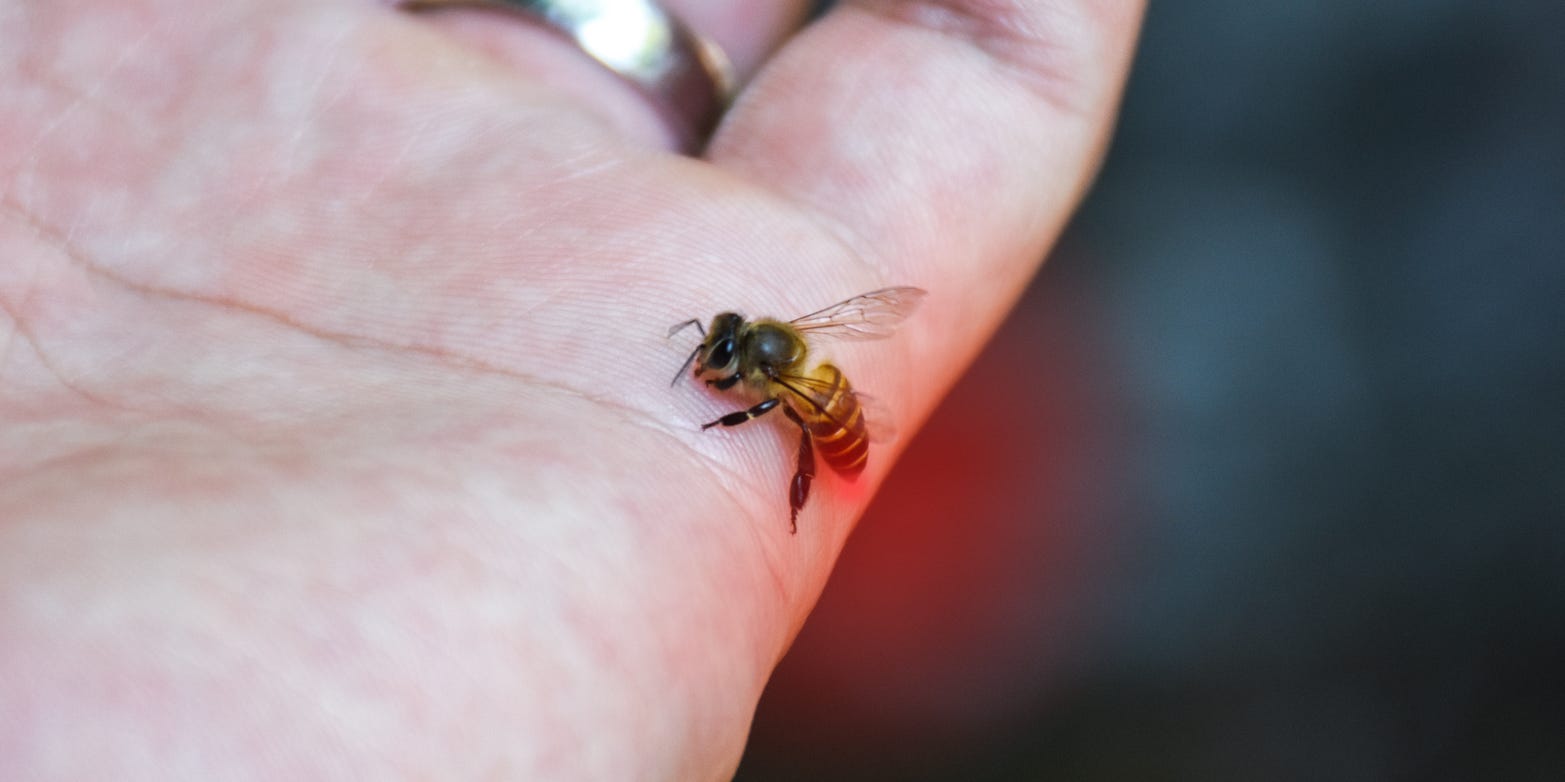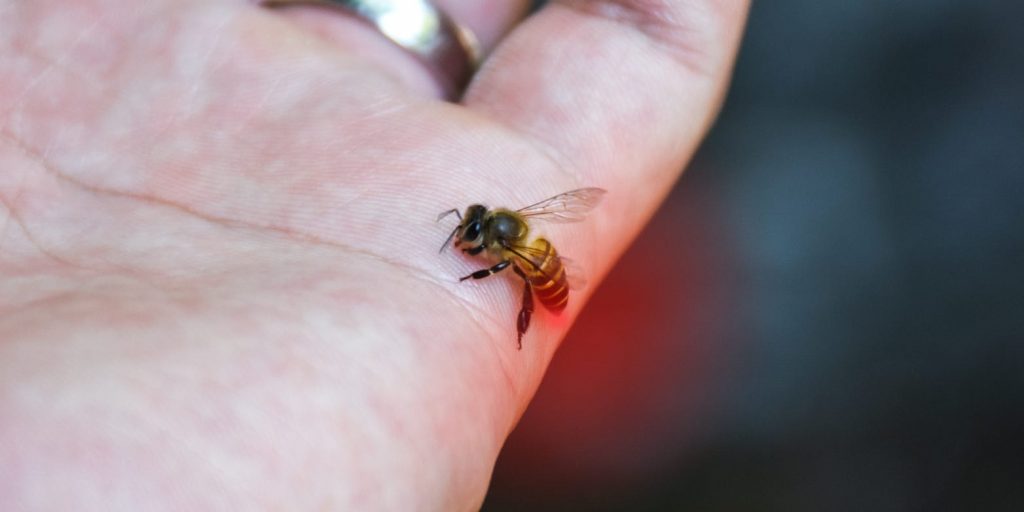
Prompilove/Getty Images
- To treat a bee sting, you must remove the stinger since it continues to pump toxins into the skin.
- Bee sting treatment can also include a cold compress, antihistamines, or pain relievers.
- If you have an allergic reaction to a bee sting, talk to your doctor about future treatment options.
- Visit Insider's Health Reference library for more advice.
If you get stung by a bee, a normal reaction can include redness, swelling, and pain near the wound. These symptoms should subside within a few hours, and you can use ice, anti-itch cream, and Advil or Tylenol to help relieve them sooner.
If you experience a normal, localized reaction, you should be able to effectively treat your bee sting at home, says David Cutler, MD, family medicine physician at Providence Saint John's Health Center.
But if you have an allergic reaction to a bee sting, you may want to seek medical attention. Here's what you should know to treat your bee sting.
How to treat a bee sting
First, it's important to immediately remove the stinger from your skin, if it's still there. You'll see a small black dot at the sting site, if so.
Some types of bees – like honey bees – have barbed stingers that remain in your skin. Other types – like carpenter bees, or venomous insects like wasps – have smooth stingers that stay attached to the insect, and they can sting you multiple times before flying away.
You won't need to remove a stinger if you're stung by a wasp, hornet, or carpenter bee. But if a honey bee stings you and the stinger remains in your skin, it can continue to pump toxins into your body, which will make symptoms worse if it's not removed.
Here's how to remove the stinger:
1. Use a scraping motion with a flat, blunt object like a credit card across the affected area to remove the stinger.
2. Don't try to pull the stinger out with tweezers or your fingers - this could result in even more venom squeezing into the skin.
3. Once the stinger is removed, wash the site with soap and water.
After you remove the stinger, you can use a few remedies to treat the pain, itchiness, and swelling that can accompany a bee sting.
What to do if you have an allergic reaction
About 5% to 7.5% of Americans will experience an allergic reaction to an insect sting at some points in their lives, according to the Journal of Asthma and Allergy.
Signs of an allergic reaction from a bee sting include:
- Hives
- Excessive itchiness that persists past a few hours
- Swelling in other areas of your body, in addition to the sting site
- Abdominal cramping
- Dizziness
According to Cutler, most allergic reactions are mild or moderate, and can still be treated at home with antihistamines and ice. But some allergic reactions are more severe.
In fact, about 3% of adults who experience insect stings develop a life-threatening allergic reaction known as anaphylaxis, which does require immediate medical attention. It's estimated that 90 to 100 Americans die every year due to anaphylaxis from an insect sting.
Signs of anaphylaxis can occur within minutes of a sting and include:
- Trouble breathing
- Chest tightness
- Swelling of tongue or throat
- Difficulty swallowing
In the case of anaphylaxis, you must be treated with an adrenaline injection, known as epinephrine. This counteracts the hormones your body releases in response to the sting and prevents your body from going into shock, Cutler says.
If you've had a mild or moderate allergic reaction to an insect sting before, you should discuss this with your doctor, as this may increase your risk for anaphylaxis in the future. Those at risk can get a prescription for an epi-pen, which allows you to administer epinephrine yourself if you have a severe reaction.
Insider's takeaway
Most of the time, you should be able to treat your bee sting at home. However, it is still important to monitor symptoms and seek medical attention immediately if you experience any signs of anaphylaxis, like difficulty breathing or lightheadedness.
And if you do experience a moderate allergic reaction to a bee sting, you should discuss it with your doctor afterward, because you could be at a higher risk of having a more severe reaction if stung again.
